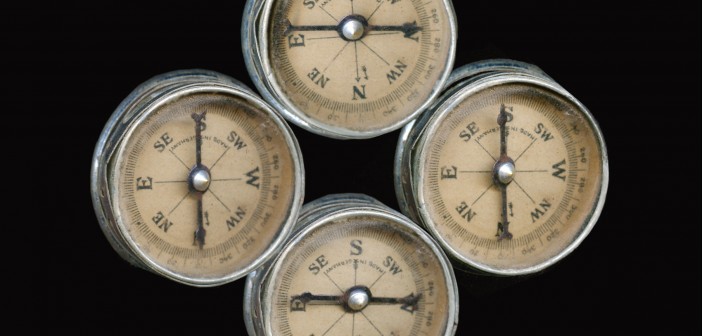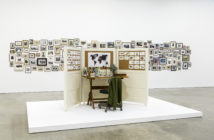Why would one want to shift from a life dedicated to the production of art to one invested in resolving educational problems? The question sounds more interesting than it actually is. It presumes that both activities are distinctly different, demanding that a person jump from one to the other to bridge a gap. The traditional view is that art making is a private and intimate activity. Meanwhile education, well or ill defined, is a public service. While in art one has relative entrepreneurial freedom, in education one submits to regulations, quantitative assessments, and to a bureaucracy that is both vigilant and oppressive.
These presumptions are true within the conventional everyday framework, and they have a functioning truth, hence the perceived rift. However, things change if we cast a utopian view on these matters. Though utopian views are considered as something belonging to dreamers, in fact mainstream constructs also operate in reference to a Utopia, usually comprised of a vision of the ideal state of affairs as adjudged by the subjective interests of those in control. We are expected to act in reference to these top-down Utopias by following their corresponding instrumentalizing ideologies. The context in which we work is shaped by these ideologies even if we may not be totally aware of how they condition us. Therefore, the question is not if Utopias have a real presence, but rather whose Utopia are we acting in accordance with. Because our choices of Utopia may be in conflict with the ones we are compelled to operate in reference to, there is a great potential for subversion, which is the word usually used in this case. In order to keep our trajectories in check, our dissenting Utopia must be summarily dismissed as useless or as dangerous fantasy.
The traditional criticisms used to negate bottom-up Utopias are generally comprised of assumptions: 1) Utopian views are impractical. 2) We’ll never reach Utopia. 3) The views are at odds with the everyday experience of reality. 4) Thinking along utopian lines doesn’t help to remove the obstacles raised by the need to be entrepreneurial, the regulations, the quantitative assessments, and the vigilant and oppressive bureaucracy.
The defense for Utopia, on the other hand, is based on other ideas: 1) Utopia is not a place but a continuous unending path. 2) The views are not impractical, but some of the strategies to implement them may be. 3) The experience of reality allows us to identify the needs for change and adjust our strategies. 4) Knowing the direction of the path of Utopia helps identify and measure the obstacles. One may, for example, review and understand why there is a need to be entrepreneurial, why the regulations are in place, why there are quantitative assessments, what the vigilant and oppressive bureaucracy serves for, and the real significance of the need to have all of them.
The notion of Utopia, then, allows us to place ourselves and to determine if we are doing things right or wrong, and adjust our purposes and strategies accordingly.
As an artist the questions then become: Is the purpose of the production of art objects to make me rich and famous? Or is it so that whatever artistic statements I produce enter the process of generating knowledge and, however modestly, improving society?
As an educator, the questions in turn become: Is the purpose of my activity to train people into the system and make sure that I survive within that system by helping maintain its stability? Or is it so that whatever situation I set up empowers people to learn on their own, enter the process of generating knowledge, and to work towards their own Utopia?
The second question for each–artist and educator–makes it clear that under certain circumstances art production and education are parts of the same continuum. Artists and educators have the option to either try to deny that continuum or reaffirm it to make it part of their utopian path. In the first case, the professional qualitative difference becomes very marked. Individuality and submission override the search for continuity and the interest in any utopian and general wellbeing. In the second case, professional identity becomes a matter of degree. The purpose is the same (it belongs to some shared aspects of Utopia), and the choice in positioning specialization is a matter of efficacy. Some people transverse the utopian path by producing objects, others do so by setting up pedagogical situations. Either one, though, addresses the cognitive process of others. Therefore both artists and educators work on the same path to shape culture.
The next point to consider is if it makes any sense, or if it’s even possible, to work in the absence of any notion of Utopia. Since Utopia–the notion of what could be–is always present, it cannot simply be ignored. Utopian views are not absolute or value-free, but have to be questioned like everything else. The STEM (Science, Technology, Engineering and Mathematics) educational structure is built on the utopian vision that all countries that use it will be able to dominate in the competition of economies. STEAM, that incorporates the A of art in the acronym, shares this same utopian view of dominance. Religious education is built on the utopian view of some form of Paradise, reachable after death, provided one complies with certain conditions and earns the appropriate ticket to enter. And the Utopia of ethnic purity promised by laws, walls, or extermination, becomes the dystopia of others. These others, in turn, operate with the utopian view of relocating and applying dystopia to those presumed to have created it. In other words, indoctrination through the use of ideology is one of the ways utopian views are transmitted. Since Utopia is not a fixed place and there is no Utopia behind Utopia, there is no absolute reference point to judge all this and often it’s rigid ideology that usurps its place. Here is where ethical judgment comes in over moral codes. In other words, true Utopian thinking cannot (or should not) take place in the absence of ethics that give the utopian thought its needed flexibility.
Basic ethical sense indicates that ultimately we are dealing with the distribution of power, an entity that some people have more of than others and where the allocation escapes fairness. It would make sense then that one of the utopian tasks for either art or education is to help people redistribute that power so that it becomes equally accessible and owned by everybody.
That is what leads art production through a process that ends in appreciation and helps passive consumption and market building rather than promote a redistribution of power.
That is what makes education cause atomistic and fragmentary thinking, leading to insulated specialization rather than enabling cognition through the development of autodidacticism and, with it, a redistribution of power.
This means that art, education, or for that matter any form of communication, should not be designed without a clear consideration of where power is accumulated and what impact our actions will have on that accumulation.
Art, at its best and when not tied down by market requirements, in this respect is the activity that potentially may act with a maximum of freedom. It allows for unbound speculation and imagination, for making connections that in functional life are not permissible, and for the creation of alternative systems of order. It is the area where one reaches and explores irreducible and unexplainable areas of knowledge, which in turn challenge us to further explorations. It is therefore the area of exploration, acquisition, and expansion of knowledge that provides us with the least amount of constraints. It is the process-area where one may experience omnipotence before any implementation may take the form of abuse of power. Art in its immaterial phase (conception, feedback, observation, revision) therefore functions like good education and closest to being utopian. It’s in the materialization and the need to communicate where art negotiates its presence and may tone down the utopian views about equalization of power. Materialization is an assertion of power unless practice is used to provide feedback and further enable the redistribution. The utopian purpose should continue to serve as reference in self-critique and the prevention of abuse. In this attempt of prevention, paradoxically, communication becomes authoritarian and manipulative.
The dilemma some Utopias present may be summed up in the wish to force people to be free. There is authoritarianism implicit in the act of liberation and empowerment desired by both utopian art and utopian education. The artist-teacher knows where the power is and makes his/her mission to raise awareness and enable both access and takeover. The gap is bridged by communication, and the way that communication is shaped entails the set of methods of manipulation commonly known as pedagogy. We should, therefore, recognize that neither authority nor manipulation can be avoided. If authority is claimed to be non-present, this becomes part of manipulation. If manipulation is absent, authority becomes declarative and abusive through a set of non-questionable orders. Power, in that case, is monopolized and can’t be redistributed.
Authority has to be co-owned with the constant ability to rotate, and manipulation has to be completely transparent. Communication implies editing, and editing is a form of manipulation: some things are left out, others are prioritized, and the whole is sequenced with a purpose. The ethical evaluation then does not apply to the act of manipulation but to the presence or absence of transparency in both the process and the utopian view that informs it. The whole procedure may be used to either search for truth or to reaffirm a lie.
As a search for truth, what we know becomes the field of our ignorance, which only will be revealed and made useful by discovering its limits and trying to go beyond them. As a lie, art and education become declarative tools that only restate what is already known and train to submissively adapt to it. As a lie, art and education may remain totally separate but betray their function. And as a search for truth, as cognitive tools, there is no rift to be bridged.
This essay will also be published in Back to the Sandbox: Art and Radical Pedagogy. Edited by Jaroslav Anděl. Bellingham, WA: Western Gallery & Public Collection, 2016.




